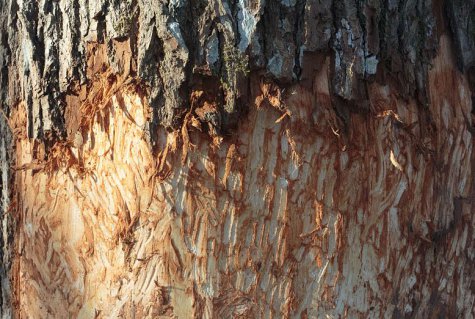About boars despite ASF
Text Vahur Sepp, forester
Photo Arne Ader
Translation Liis
Wild boar Metssiga Sus scrofa
An exciting time has arrived for the wild boar – the rutting period has started. The start to a new generation of piglets is made at the end of November and in December.
The males move around more than usual. By now an ”armour” has developed on the thorax. The armour is a thickening of connective tissue, 2-3 centimetres thick, under the skin. Its purpose is to protect the thorax against tusk blows from competitors. The sack-like preputial gland that is located at the tip of the penis is also enlarged. A rank boar odour spreads from it. The odour is particularly often felt in urinating locations.
On the scrubbing trees of boars tusk marks of the males can be found. They make tusk marks all year round but particularly frequently during the rutting period. Who knows how to read it can see how many boars there are in an area. The aim is to make the mark as high up as possible. By rolling in urine and scrubbing against the tree they leave a characteristic smell, particular to that male, on the tree. The scrubbing trees are like notice boards. The male boar reads important information about its rivals from it. This in turn helps to prevent unnecessary fights. Bloody tournaments among themselves usually occur between adversaries of reasonably equal strength.
The interest of sows in the scrubbing trees has increased too. It is of course interesting to know which cavaliers move around in the neighbourhood and whom one would like best to come wooing …









